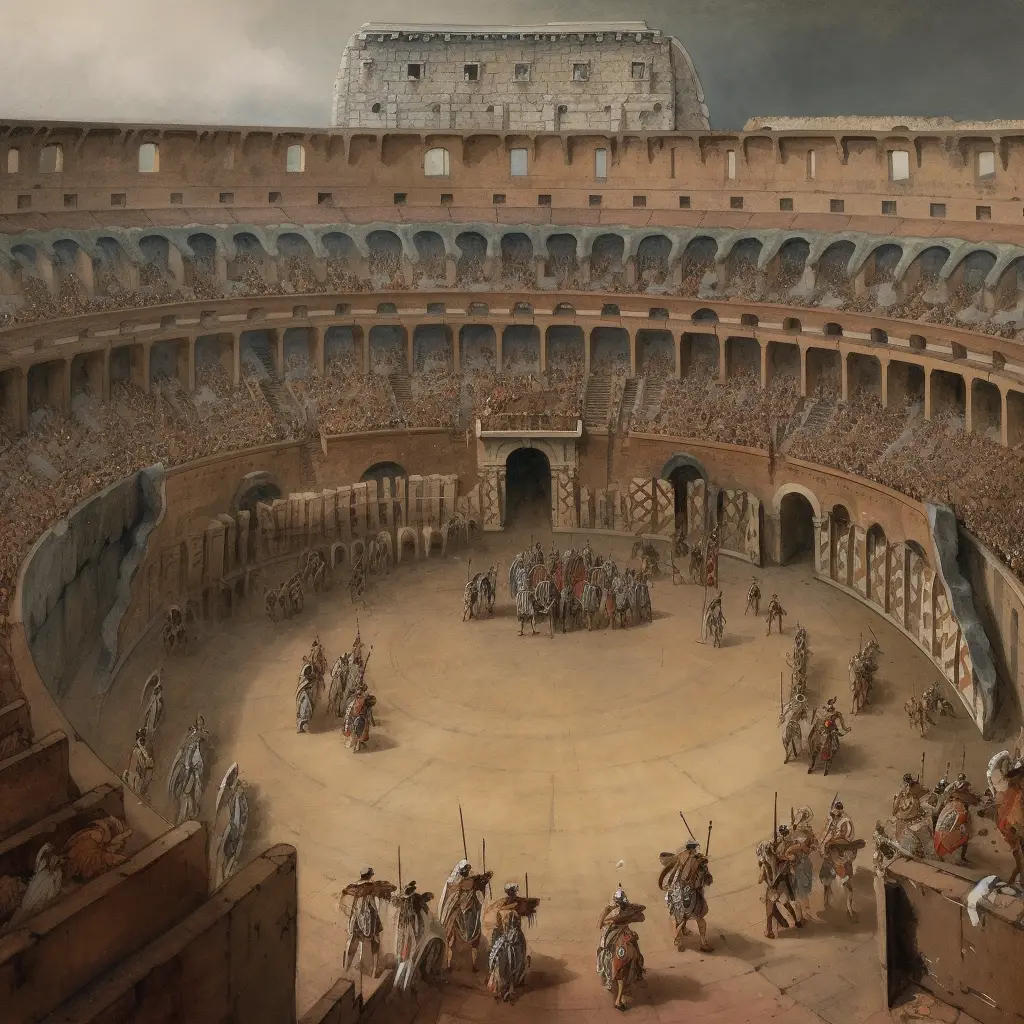Roman Gladiators
Gladiators were combatants who fought against each other and condemned criminals and wild animals during the time of the Roman Republic and Roman Empire. They were armed with deadly weapons and in most cases fought till either one of them accepted defeat or was killed fighting.
Roman gladiators were trained fighters who entertained audiences by engaging in battles with each other or with wild animals. They were often slaves or prisoners of war who were forced to fight for their lives. The popularity of gladiatorial games peaked in the Roman Empire during the 1st and 2nd centuries AD but eventually declined due to changing attitudes towards violence and the cost of maintaining the games.
Gladiators fought for the entertainment of Rome’s rich and mighty and also for the public. People thronged the arenas to watch gladiator games and it may sound appalling to a modern man, but gladiator fighting was a popular sport in Rome, just like soccer is today.
Roman people enjoyed the sight of blood and carnage. They built amphitheaters like ‘The Colosseum’, where gladiator games were held regularly and were witnessed by excited crowds who cheered for their favorite fighters just like we cheer for our favorite sportsmen and teams today.
Roman Gladiators Facts for Kids
- Gladiators fought for entertainment.
- They wore armor and used weapons.
- Some gladiators were slaves.
- They trained in special schools.
- Gladiators fought in arenas.
- The emperor watched the fights.
- Gladiators had different fighting styles.
- They fought against other gladiators.
- The winner could earn freedom.
- Gladiators were admired by Romans.

The Rise and Impact of Gladiator Games in Ancient Rome
While historians are not really sure about the exact time of origin of gladiator games, it is widely believed that they were first held in the late fourth century BC.
Many believe that the sport was in fact, a foreign import, most probably Etruscan. The early gladiator games were a part of war victory celebrations. They gained popularity and by the third century BC, were the most popular public pastime.
The games soon became a ritual and a part of a commemorative service (Munus) offered in honor of a dead individual, arranged by his descendants.
Importance of Gladiator Games in Roman Society: Gladiator games were not only a source of entertainment for people but were also used by sponsors to gain political favors. Gladiator owners and sponsors of such games arranged extravagant gladiator fights in honor of dead citizens to gain favors from their powerful and rich descendants.
In 65 and 63 BC, anti-corruption laws were passed by the Senate to curb the custom of gaining political favors through gladiator games. The effort, however; did not succeed.
Gladiator Games: Popularity and Politics in Ancient Rome
Gladiator games reached the peak of their popularity in the last days of the Roman Republic. Julius Caesar splurged a huge amount of wealth on such games.
During this period, these games provided the most popular and cheap entertainment to the public and were a useful method of garnering support during election times. Romans seeking political patronage used gladiator fights as a tool to please powerful senators and consuls.
Decline of Gladiators: Wars, Religion, and the End of an Era

In the third century AD, Roman Empire faced existential challenges. This meant more spending on wars and less on gladiatorial games and rituals.
The rise of Christianity as the official religion of the Roman Empire resulted in the banning of all pagan rituals and festivals like Munus. With a decline in official patronage, gladiator fights gradually ceased to take place.
Gladiators: Origins, Diversity, and Fame in Ancient Rome
Gladiators were recruited from different sources. Some were slaves bought from different lands under Roman control, some were prisoners of war and most of the others were volunteers who at a time accounted for half of all the gladiators.
These volunteer combatants were paid for their services and were generally skilled fighters. Most of the gladiators were Thracians, Gauls, and Africans. There is evidence to suggest that females also participated in gladiatorial sports. Interestingly certain emperors like Caligula, Commodus, Titus, and Claudius also participated in such sports. However, the fights involving emperors were designed to pose minimal risk to them.
The ethnicity of gladiators was also evident from the way they were dressed and armed. Gladiators used swords, spears, short javelins, and shields as weapons and wore helmets and body armor for protection. They were well fed and looked after by their owners and were rewarded after they won fights.
The Public also admired famous and successful gladiators and respected those who died courageously in the arena.
Roman Colosseum

The Roman Colosseum, known as the Flavian Amphitheatre, held immense significance in the history of Roman gladiators. Constructed in the first century AD, this majestic arena hosted gladiatorial combats and captivating spectacles. With its vast capacity, it drew in crowds of tens of thousands, eagerly assembled to witness the exhilarating clashes between gladiators.
These remarkable displays exhibited the skill, bravery, and endurance of these warriors, who fought fiercely for their lives. The Colosseum became an emblem of the splendor and magnificence of Roman gladiatorial games, etching an indelible mark on the annals and imagination of these legendary combatants.



